Real-Time Wind Field Estimation and Pitot Tube Calibration Using an Extended Kalman Filter
Abstract
1. Introduction
2. Measurement Principle and Description of Problem
2.1. Measurement Principle of Pitot Tube
2.2. Description of Problem
3. Pitot Tube Calibration and Wind Field Measurement
3.1. Design of Extended Kalman Filter
3.2. Design of Flight Scheme and Observability Analysis
4. Simulation and Experiments
4.1. Computer Simulation Results
4.2. Actual Flight Verification
5. Conclusions
Author Contributions
Funding
Institutional Review Board Statement
Informed Consent Statement
Data Availability Statement
Acknowledgments
Conflicts of Interest
References
- Mostafa, E.; Fu, L.; Ibrahim, A.; Usman, A. A solution of UAV localization problem using an interacting multiple nonlinear fuzzy adaptive H-infinity models filter algorithm. Chin. J. Aeronaut. 2019, 32, 978–990. [Google Scholar] [CrossRef]
- Shakhatreh, H.; Sawalmeh, A.H.; Al-Fuqaha, A.; Dou, Z.C.; Almaita, E.; Khalil, I.; Othman, N.S.; Khreishah, A.; Guizani, A.M. Unmanned Aerial Vehicles (UAVs): A Survey on Civil Applications and Key Research Challenges. IEEE Access 2019, 7, 48572–48634. [Google Scholar] [CrossRef]
- Liu, C.; Ai, M.C.; Zhou, C.; Zhou, Y.; Wu, H.B. Detection of Firmiana Danxiaensis Canopies by a Customized Imaging System Mounted on an UAV Platform. J. Sens. 2018, 2018, 6869807. [Google Scholar] [CrossRef]
- Tran, H.K.; Chiou, J.S.; Dang, V.H. New Fusion Algorithm-Reinforced Pilot Control for an Agricultural Tricopter UAV. Mathematics 2020, 8, 1499. [Google Scholar] [CrossRef]
- Gu, H.W.; Lyu, X.M.; Li, Z.X.; Shen, S.J.; Zhang, F. Development and Experimental Verification of a Hybrid Vertical Take-Off and Landing (VTOL) Unmanned Aerial Vehicle (UAV). In Proceedings of the 2017 Inernational Conference on Unmanned Aircraft Systems, Miami, FL, USA, 13–16 June 2017; pp. 160–169. [Google Scholar]
- Schellenberg, B.; Richardson, T.; Richards, A.; Clarke, R.; Watson, M. On-Board Real-Time Trajectory Planning for Fixed Wing Unmanned Aerial Vehicles in Extreme Environments. Sensors 2019, 19, 4085. [Google Scholar] [CrossRef] [PubMed]
- Dulf, E.H.; Saila, M.; Muresan, C.I.; Miclea, L.C. An Efficient Design and Implementation of a Quadrotor Unmanned Aerial Vehicle Using Quaternion-Based Estimator. Mathematics 2020, 8, 1829. [Google Scholar] [CrossRef]
- Saeed, A.S.; Younes, A.B.; Cai, C.X.; Cai, G.W. A survey of hybrid Unmanned Aerial Vehicles. Prog. Aerosp. Sci. 2018, 98, 91–105. [Google Scholar] [CrossRef]
- Carlson, S. A Hybrid Tricopter/Flying-Wing VTOL UAV. In Proceedings of the 52nd Aerospace Sciences Meeting, National Harbor, Maryland, 13–17 January 2014; pp. 1–11. [Google Scholar]
- Saeed, A.S.; Younes, A.B.; Islam, S.; Dias, J.; Seneviratne, L.; Cai, G.W. A Review on the Platform Design, Dynamic Modeling and Control of Hybrid UAVs. In Proceedings of the 2015 International Conference on Unmanned Aircraft Systems, Denver, CO, USA, 9–12 June 2015; pp. 806–815. [Google Scholar]
- Ducard, G.; Hua, M. Modeling of an Unmanned Hybrid Aerial Vehicle. In Proceedings of the 2014 IEEE Conference on Control Applications, Antibes, France, 8–10 October 2014; pp. 1011–1016. [Google Scholar]
- Hansen, S.; Blanke, M. Diagnosis of Airspeed Measurement Faults for Unmanned Aerial Vehicles. IEEE Trans. Aerosp. Electron. Syst. 2014, 50, 224–239. [Google Scholar] [CrossRef]
- Mallaun, C.; Giez, A.; Baumann, R. Calibration of 3-D wind measurements on a single-engine research aircraft. Atmos. Meas. Tech. 2015, 8, 3177–3197. [Google Scholar] [CrossRef]
- Cooper, W.A.; Spuler, S.M.; Spowart, M.; Lenschow, D.H.; Friesen, R.B. Calibrating airborne measurements of airspeed, pressure and temperature using a Doppler laser air-motion sensor. Atmos. Meas. Tech. 2014, 7, 3215–3231. [Google Scholar] [CrossRef]
- Cho, A.; Kang, Y.S.; Park, B.J.; Yoo, C.S.; Koo, S.O. Air data system calibration using GPS velocity information. In Proceedings of the 2012 12th International Conference on Control, Automation and Systems, Jeju Island, Korea, 17–21 October 2012; pp. 433–436. [Google Scholar]
- Conley, S.A.; Faloona, I.C.; Lenschow, D.H.; Karion, A.; Sweeney, C. A Low-Cost System for Measuring Horizontal Winds from Single-Engine Aircraft. J. Atmos. Ocean Tech. 2014, 31, 1312–1320. [Google Scholar] [CrossRef]
- Neumann, P.P.; Bartholmai, M. Real-time wind estimation on a micro unmanned aerial vehicle using its inertial measurement unit. Sens. Actuators A Phys. 2015, 235, 300–310. [Google Scholar] [CrossRef]
- Waslander, S.L.; Wang, C. Wind Disturbance Estimation and Rejection for Quadrotor Position Control. In Proceedings of the AIAA Infotech@Aerospace Conference and AIAA Unmanned, Seattle, WA, USA, 6–9 April 2009; pp. 1–14. [Google Scholar]
- Cho, A.; Kim, J.; Lee, S.; Kee, C. Wind Estimation and Airspeed Calibration using a UAV with a Single-Antenna GPS Receiver and Pitot Tube. IEEE Trans. Aerosp. Electron. Syst. 2011, 47, 109–117. [Google Scholar] [CrossRef]
- Crowley, C.; Shinder, I.I.; Moldover, M.R. The effect of turbulence on a multi-hole Pitot calibration. Flow Meas. Instrum. 2013, 33, 106–109. [Google Scholar] [CrossRef]
- Huang, W.; Su, X.X. Design of a Fault Detection and Isolation System for Intelligent Vehicle Navigation System. Int. J. Navig. Obs. 2015, 2015, 279086. [Google Scholar] [CrossRef]
- Ahmeid, M.; Armstrong, M.; Gadoue, S.; Al-Greer, M.; Missailidis, P. Real-Time Parameter Estimation of DC-DC Converters using a Self-tuned Kalman Filter. IEEE Trans. Power Electron. 2017, 32, 5666–5674. [Google Scholar] [CrossRef]
- Goshen-Meskin, D.; Bar-Itzhack, I.Y. Observability analysis of piece-wise constant systems. IEEE Trans. Aerosp. Electron. Syst. 1992, 28, 1056–1067. [Google Scholar] [CrossRef]
- Fernando, T.; Jennings, L.; Trinh, H. Numerical implementation of a Functional Observability algorithm: A Singular Value Decomposition Approach. In Proceedings of the 2010 IEEE Asia Pacific Conference on Circuits and Systems, Kuala Lumpur, Malaysia, 27 May 2010; pp. 796–799. [Google Scholar]
- Song, T.X.; Li, K.; Sui, J.; Liu, Z.J.; Liu, J.C. Self-calibration method of inner lever-arm parameters for tri-axis RINS. Meas. Sci. Technol. 2017, 28, 1–10. [Google Scholar] [CrossRef]
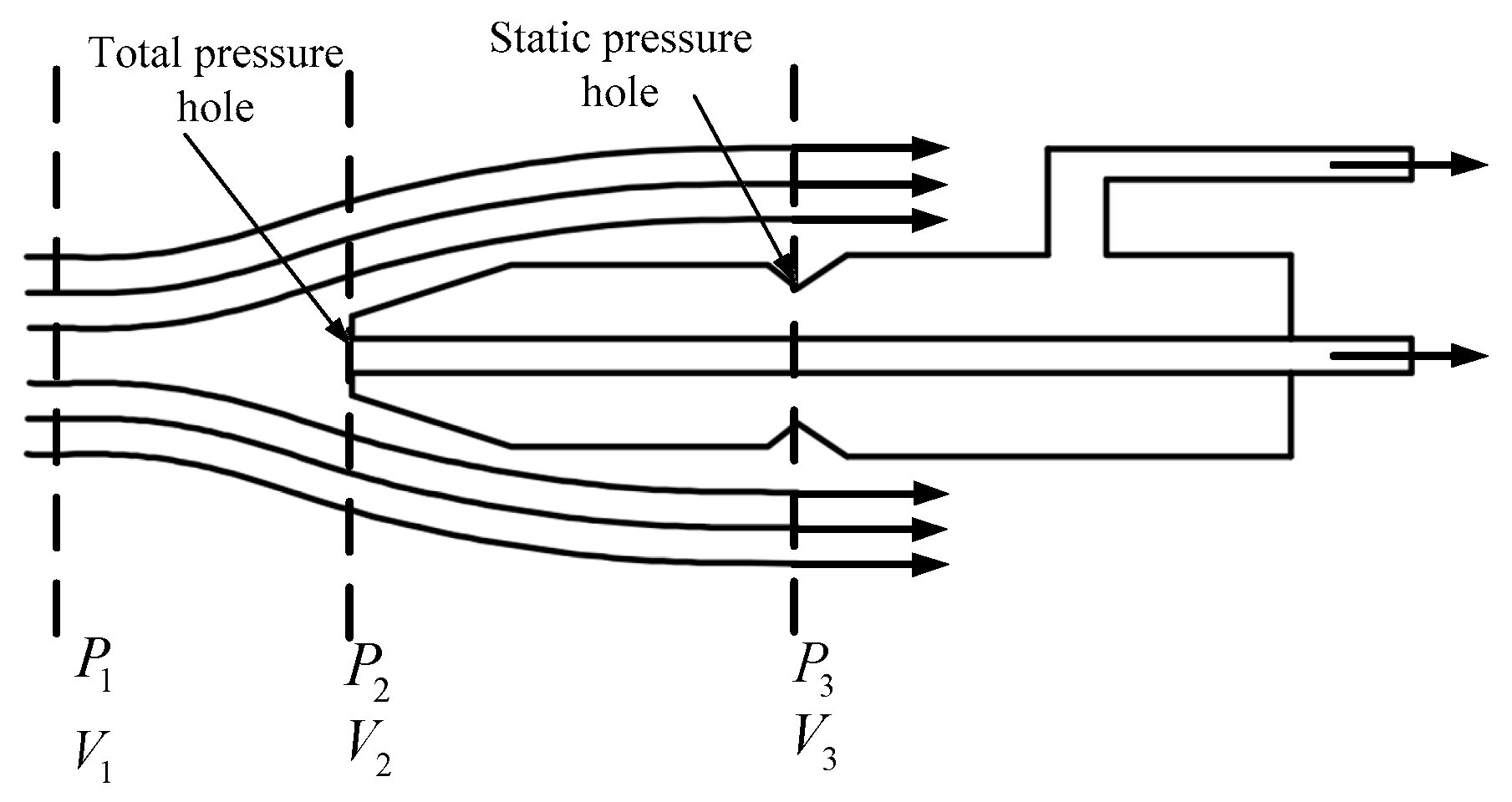



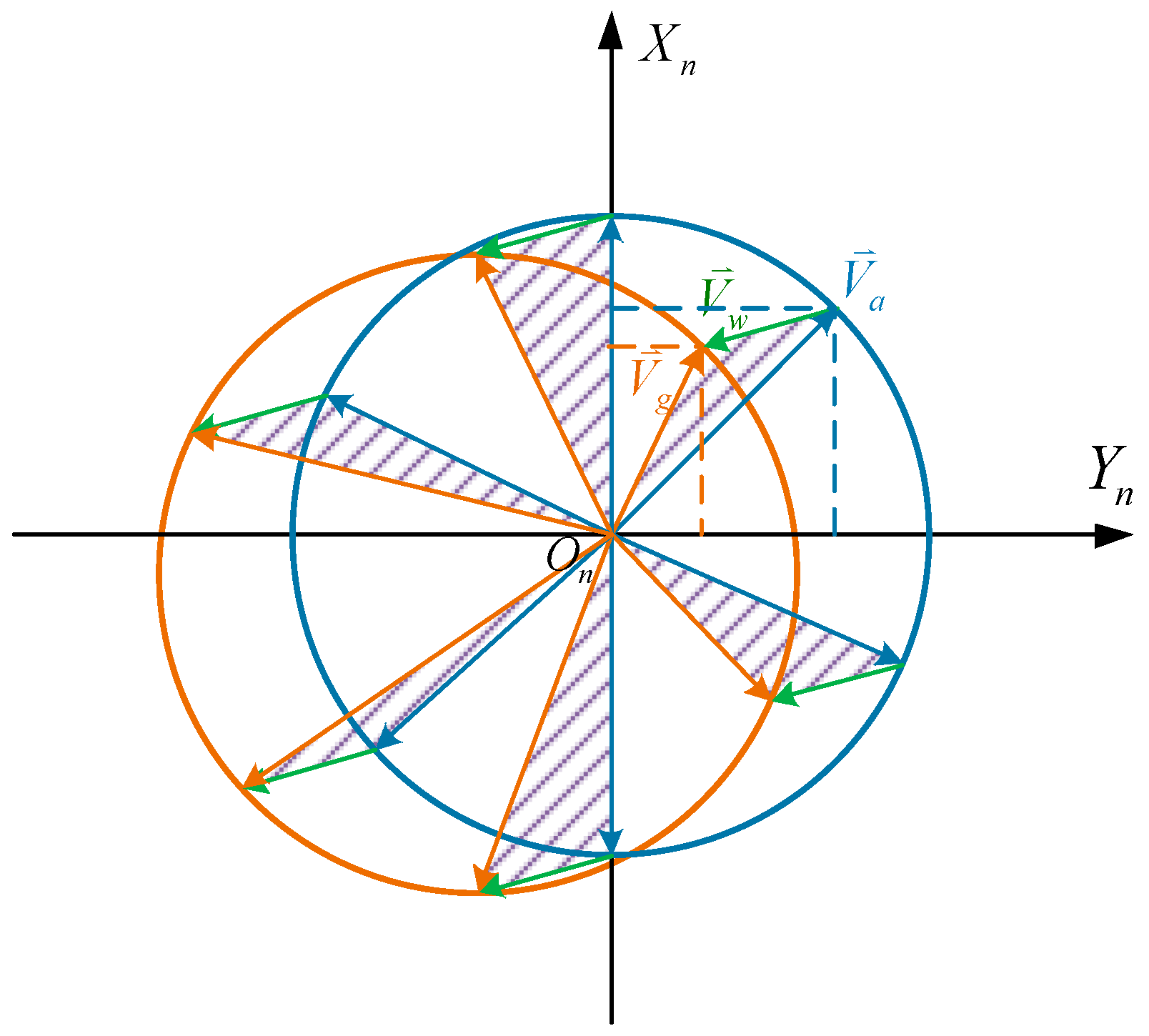
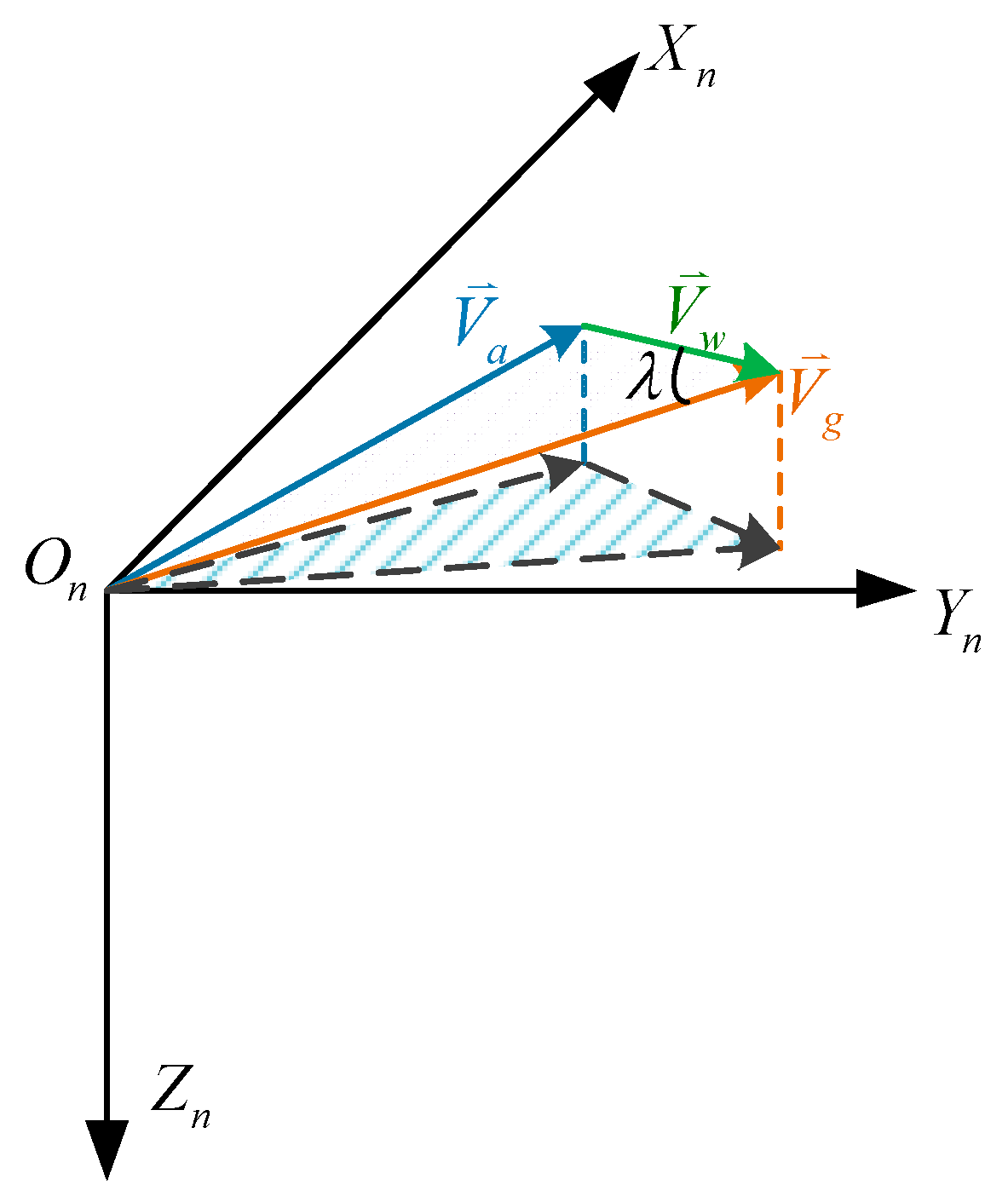

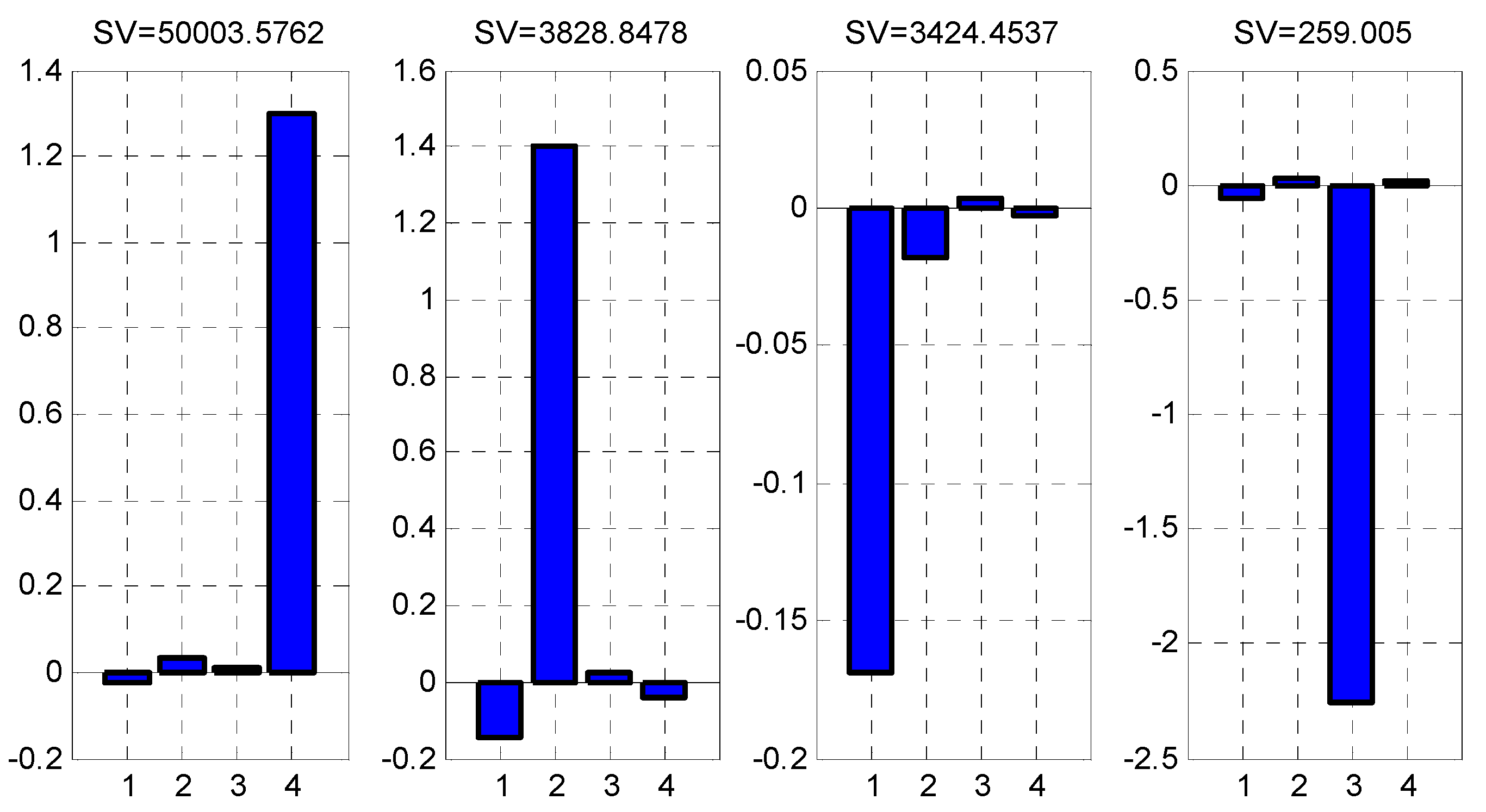
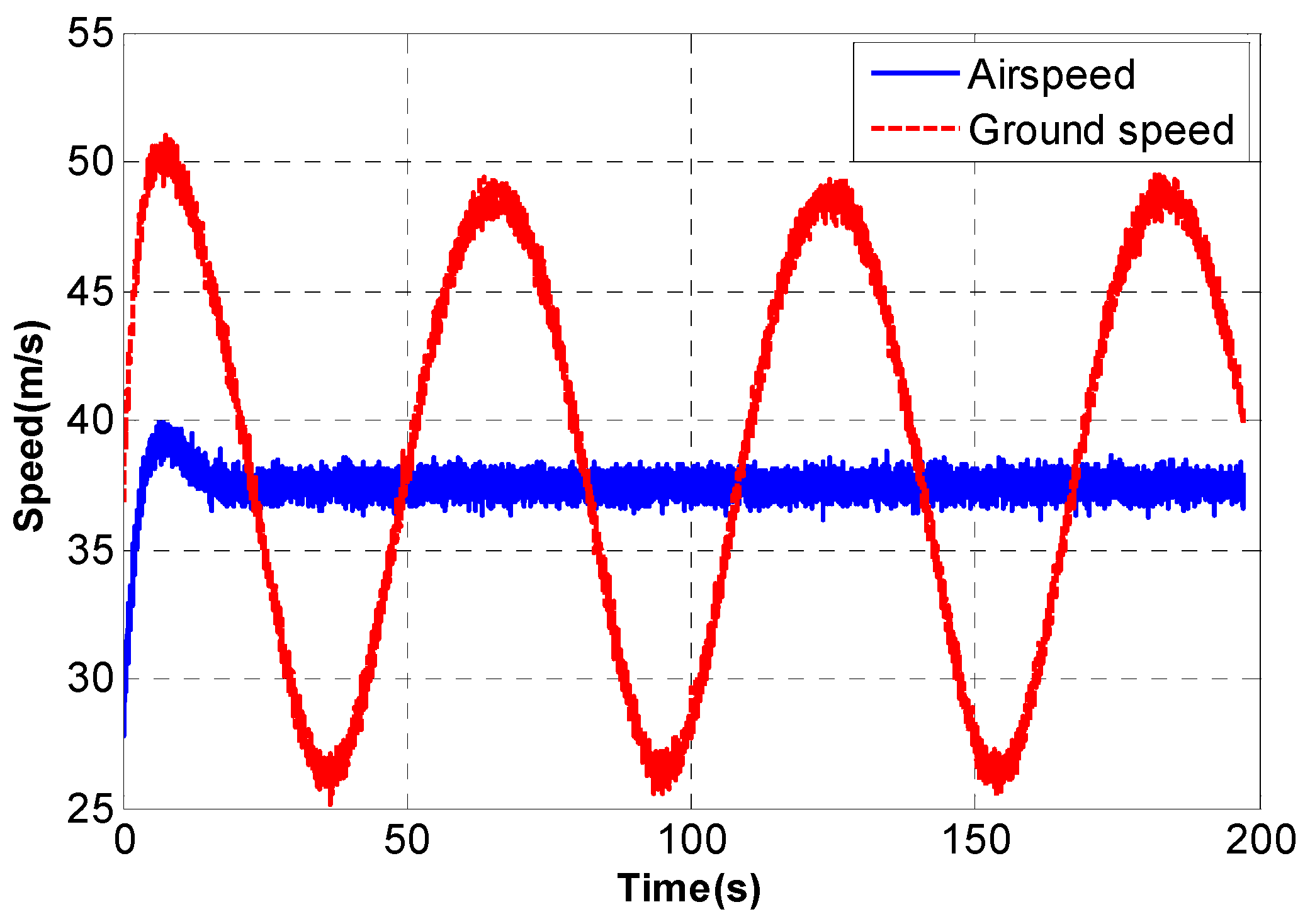
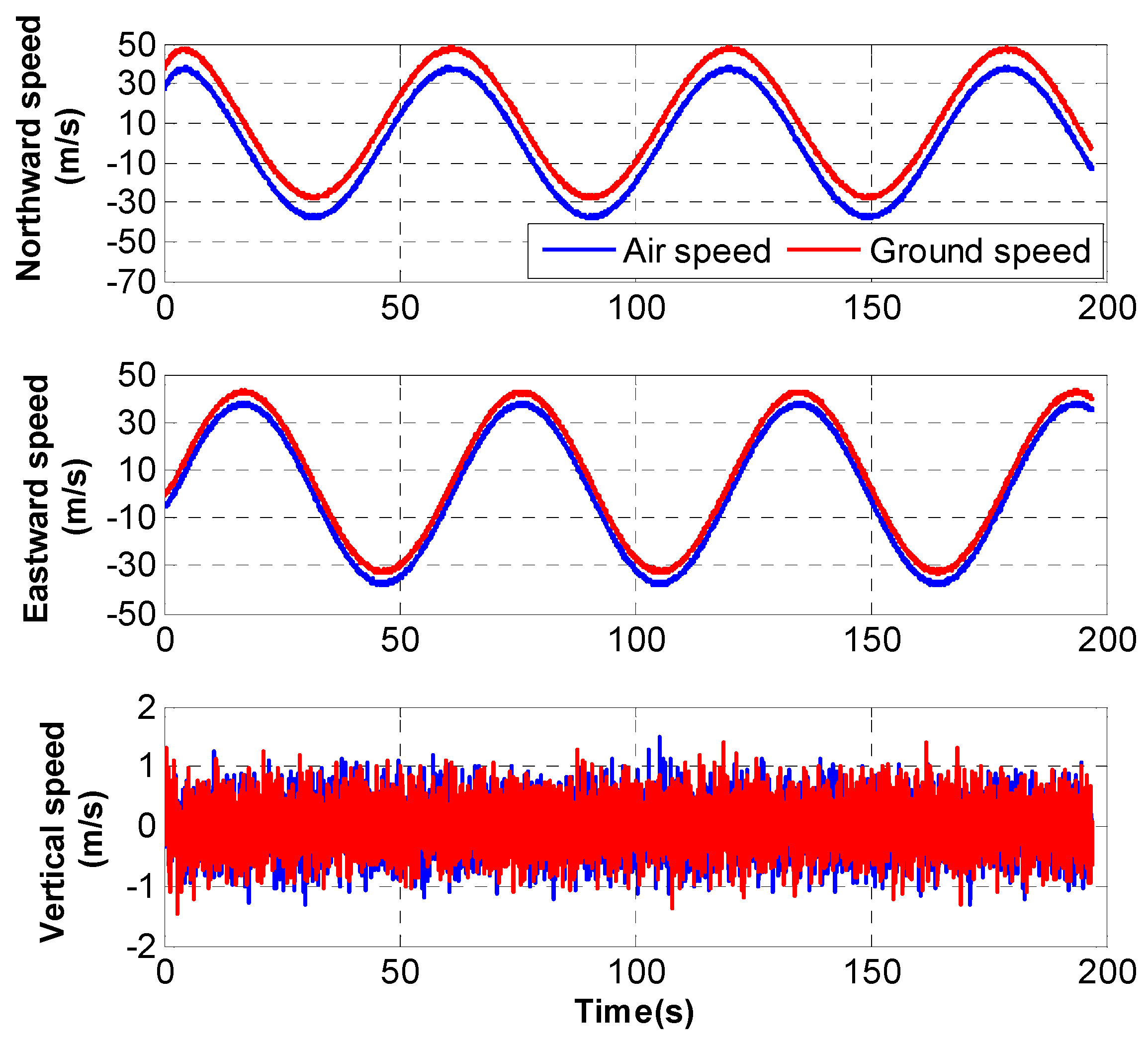
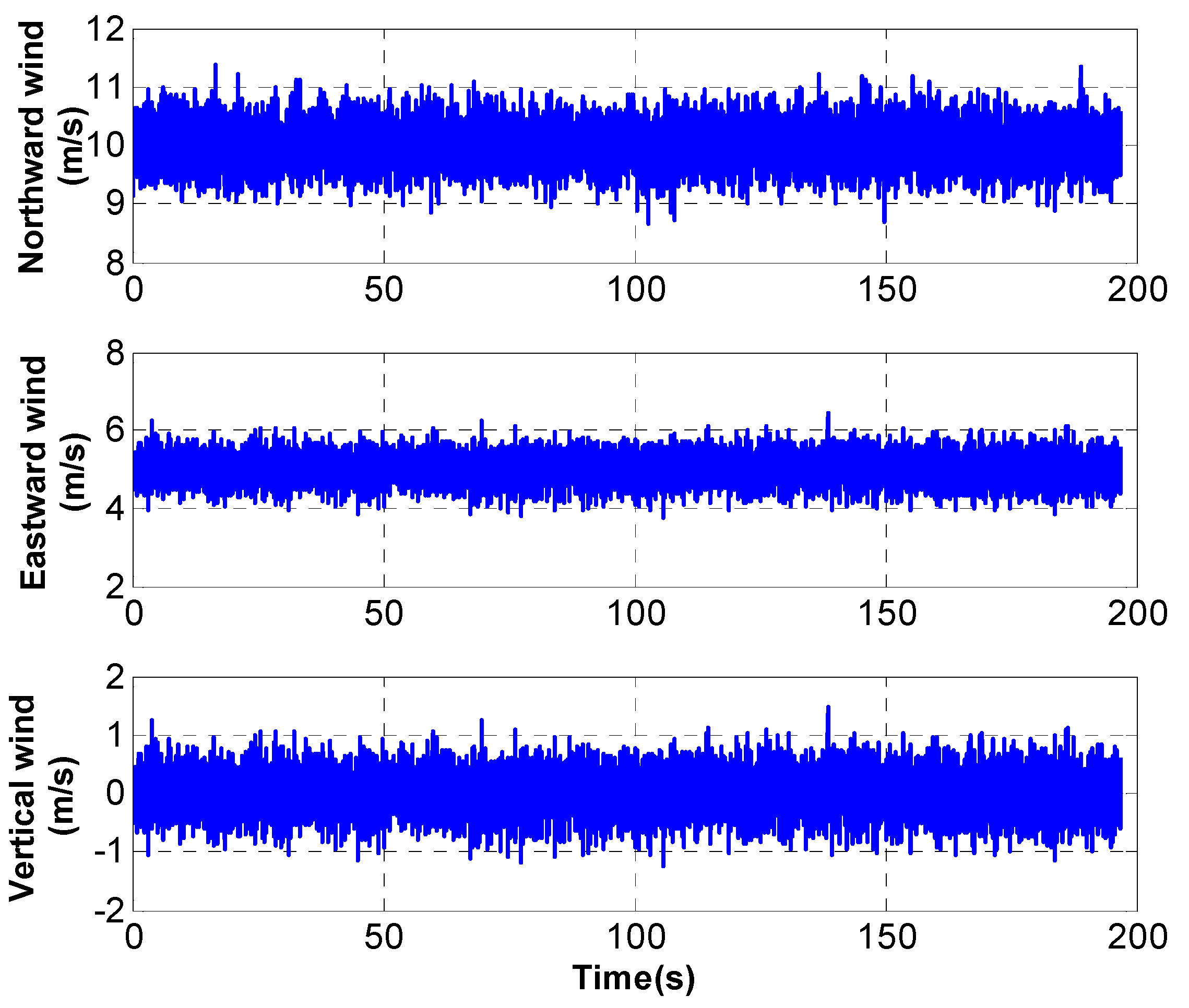


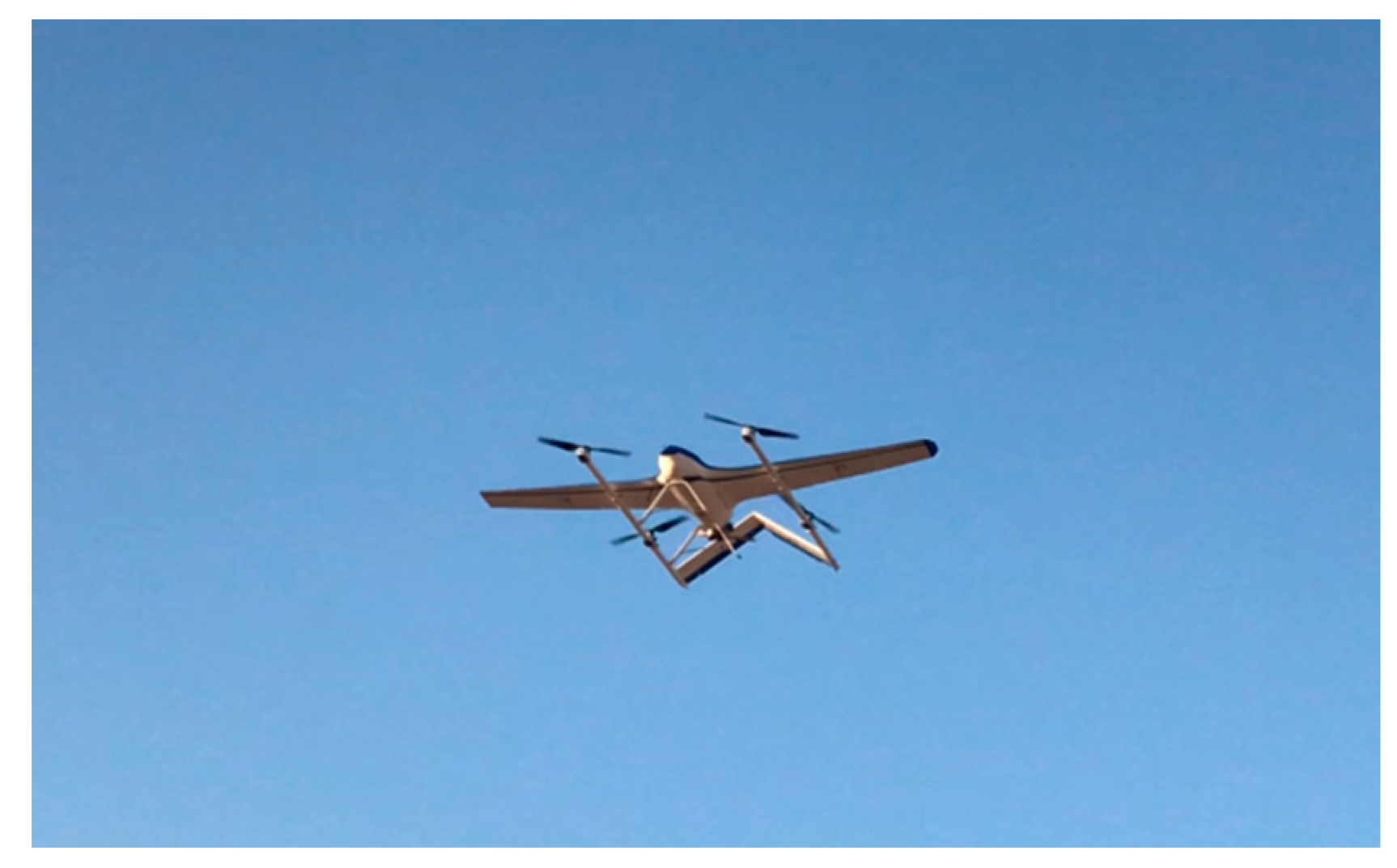

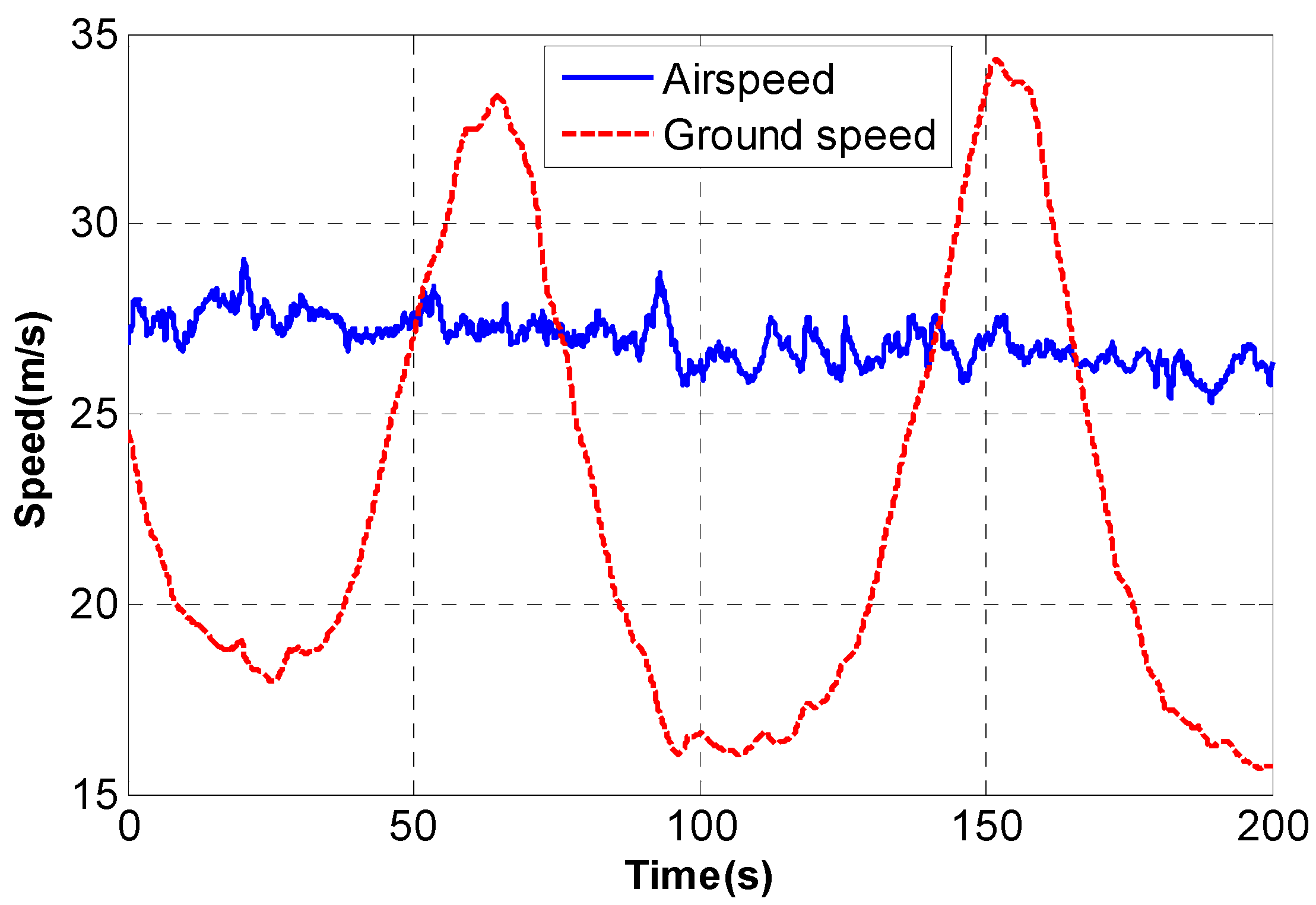

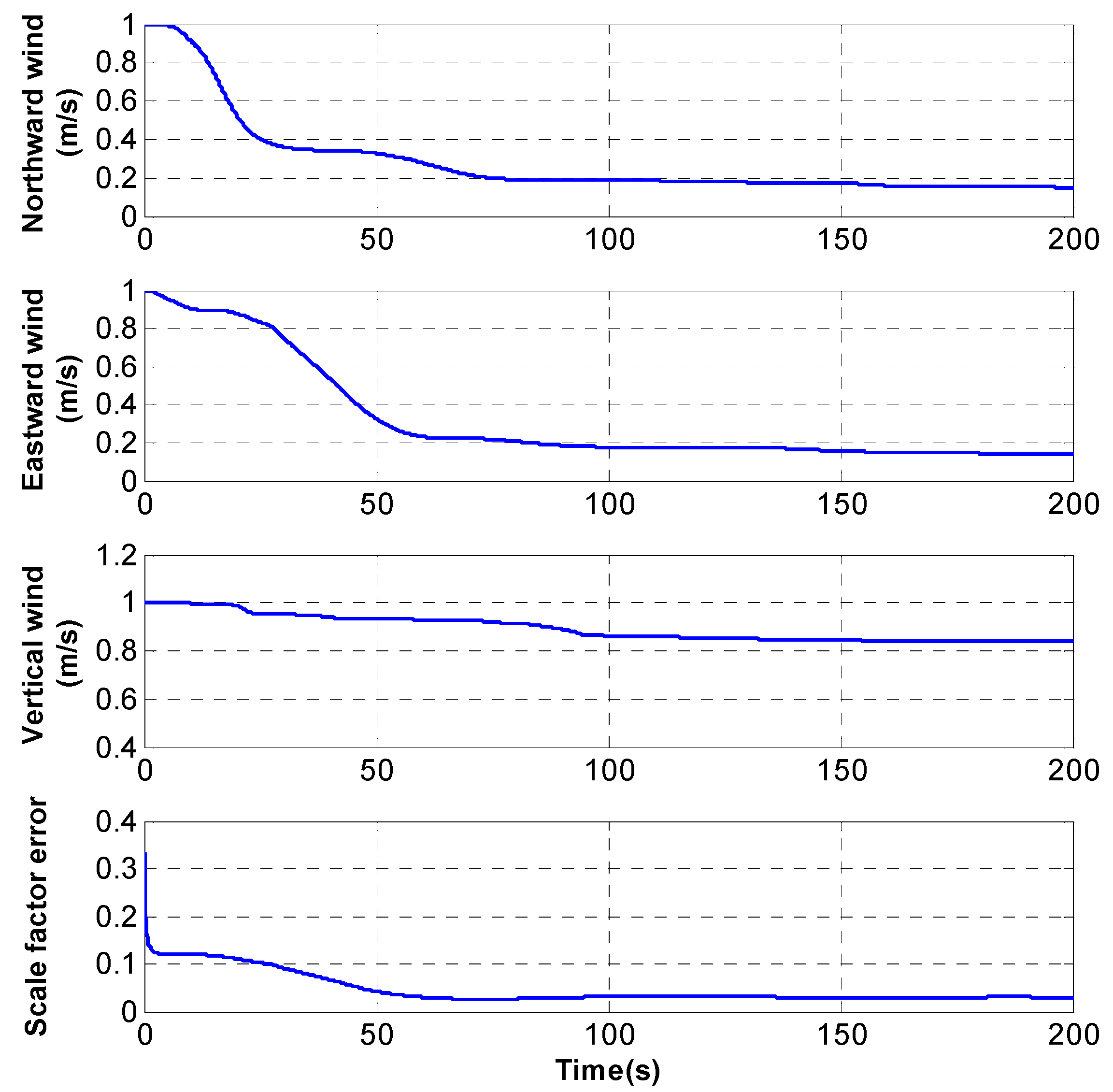
Publisher’s Note: MDPI stays neutral with regard to jurisdictional claims in published maps and institutional affiliations. |
© 2021 by the authors. Licensee MDPI, Basel, Switzerland. This article is an open access article distributed under the terms and conditions of the Creative Commons Attribution (CC BY) license (http://creativecommons.org/licenses/by/4.0/).
Share and Cite
Zhang, Q.; Xu, Y.; Wang, X.; Yu, Z.; Deng, T. Real-Time Wind Field Estimation and Pitot Tube Calibration Using an Extended Kalman Filter. Mathematics 2021, 9, 646. https://doi.org/10.3390/math9060646
Zhang Q, Xu Y, Wang X, Yu Z, Deng T. Real-Time Wind Field Estimation and Pitot Tube Calibration Using an Extended Kalman Filter. Mathematics. 2021; 9(6):646. https://doi.org/10.3390/math9060646
Chicago/Turabian StyleZhang, Qian, Yifan Xu, Xueyun Wang, Zelong Yu, and Tianyi Deng. 2021. "Real-Time Wind Field Estimation and Pitot Tube Calibration Using an Extended Kalman Filter" Mathematics 9, no. 6: 646. https://doi.org/10.3390/math9060646
APA StyleZhang, Q., Xu, Y., Wang, X., Yu, Z., & Deng, T. (2021). Real-Time Wind Field Estimation and Pitot Tube Calibration Using an Extended Kalman Filter. Mathematics, 9(6), 646. https://doi.org/10.3390/math9060646







